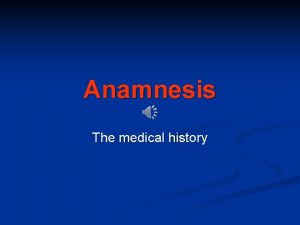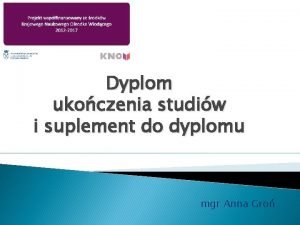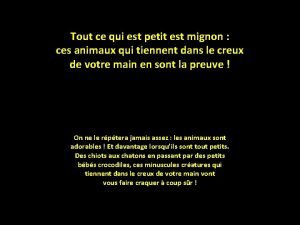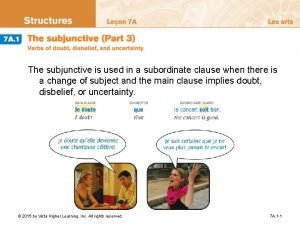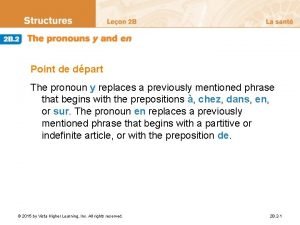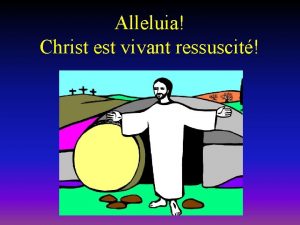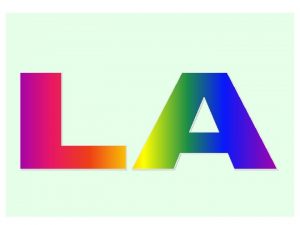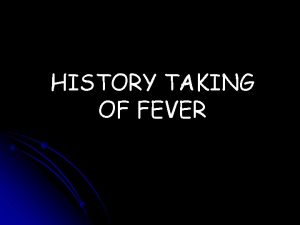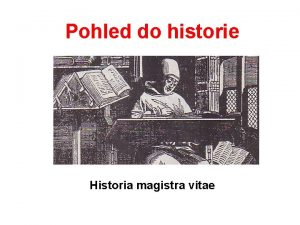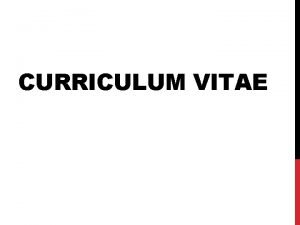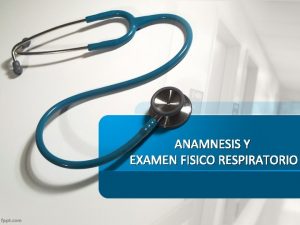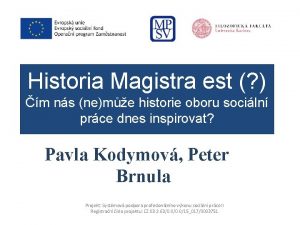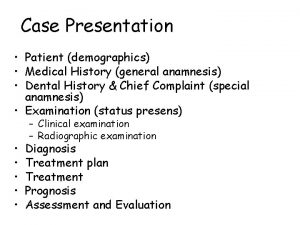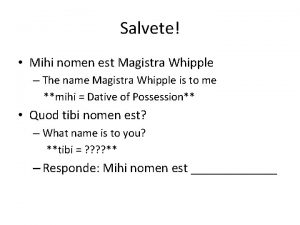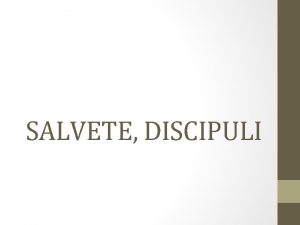Anamnesis The medical history Historia est magistra vitae









- Slides: 9

Anamnesis The medical history

Historia est magistra vitae But only if we can understand… most demanding part of doctorś work n Together with physical examination still main part of medical evaluation of patient n Can´t be fully replaced by computer questionnaires, neither with wide scale of complementary methods (X-rays, CT, MRI, PET-CT, laboratory examinations etc. ) n

Parts of anamnesis Basic information: personal data, name, surname, date of birth/ID, domicile, insurance company n Family history(straight relatives): disease with complete/partial inheritance of: parents, siblings and children, event. Grandparents, e. g. cardiovascular diseases and age of onset (significant is under 50 at men, under 55 et women), thromboembolic disease, diabetes mellitus, gastroduodenal ulceras, cancers, psychiatrical diseases, metabolic n

Personal history n n n Summary of serious diseases from childhood till nowadays, organised by the importance and relation or date, , thraumas , operations - date, complications, persisting handicap Firstly let the patient talk spontaneously (with regulation) and then ask for most important diseases according the organ systems. Gynaecological history: periods -regularity, quantity, menarche, menopauza, deliveries, abortions, operations Pharmacological history: list of long term used (also unregulary) drugs, their effects and side

Epidemiological history: contacts with patients suffering from infectious disease, with animals and their recrements, insect biting, travelling in exotic countries n Social and work history: occupationtoxins, radiation, work and social stress and conflict, family comflicts, habitationsocial conditions n Allergies and transphusion reactions, type of reaction, side effects of medicaments n Abuses: drugs, alcohol- how much and frequent, cigarets – how many per day, n

Current disease What is the leading patient problem? (What was the impuls to decide visit the physisian right today? ) n Description of the problem: n qualitative characteristics coughwet/dray, with pain, quality of mucose, Pain – stabbing, burning, itching, dull, … n place characteristics- location and iradiation, its changes in time characteristics – start of the problem(suddenly/slowly, part of the day), n

Relations (to meal, movement, position, physical effort, stress…) and circumstations (how the problem occurs, in which situation) n upto the present evaluations and their results, effect of treatment. n Lets start speak patient spontaneously (with regulation) and then ask complementary question.

Other complaints and vital functions n n n Breathing and respiratory problems, apetite and weight changes, digestion and defecation, urination, sleeping, fever In details: gastrointestinal: apetite, weight loss, vomiting, diarrhoea(frequency, quality), abdominal pain, regularity and frequence of defecation, blood and mucous in faeces, intolerance of specific meals(s) Urogenita: polakisuria, nycturia, dysuria, color of urine, amount, menstruation-regularity and duration of periods, amount of bleeding (as number of tampons/napkins per day)

Cardiovascular and breathing problems: dyspnoe, chest pain (circumstances of origin, conection with breathing and other movement or dyspnea, palpable pain), cought, sore thorat, expectoration of mucous, blood, n Sleeping - start of sleeping, during the night awakenings and their reason, how many pillows under head at heart failure, hanging of the legs at critical ischaemia, n
 Anamnesis vitae meaning
Anamnesis vitae meaning Latar belakang mater et magistra
Latar belakang mater et magistra Dyplom magistra z wpisem
Dyplom magistra z wpisem Renard roux bébé
Renard roux bébé Il est douteux que le metteur en scène où est l’acteur.
Il est douteux que le metteur en scène où est l’acteur. Quel est le nom de la femelle du sanglier
Quel est le nom de la femelle du sanglier Papa est au garage? oui, il
Papa est au garage? oui, il Prière du matin et du soir christ est vivant
Prière du matin et du soir christ est vivant Je suis tu es il est song
Je suis tu es il est song Qu'est ce que c'est
Qu'est ce que c'est
